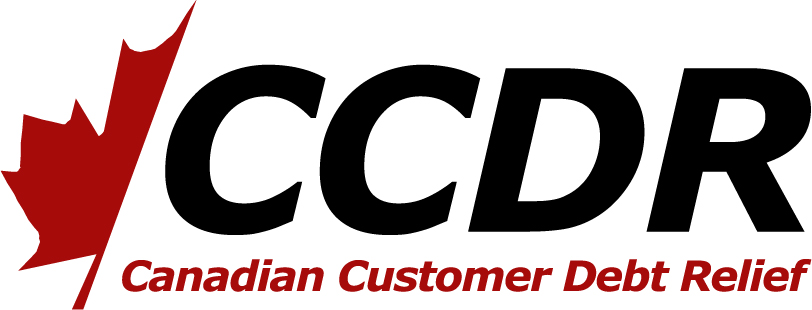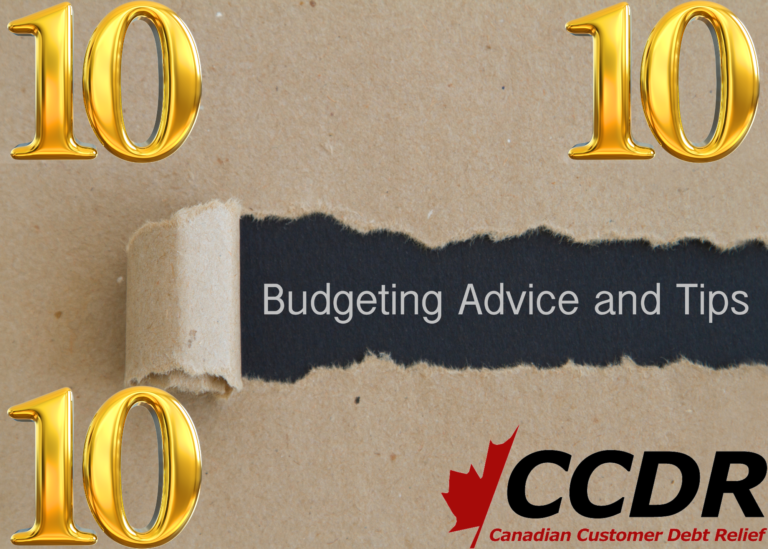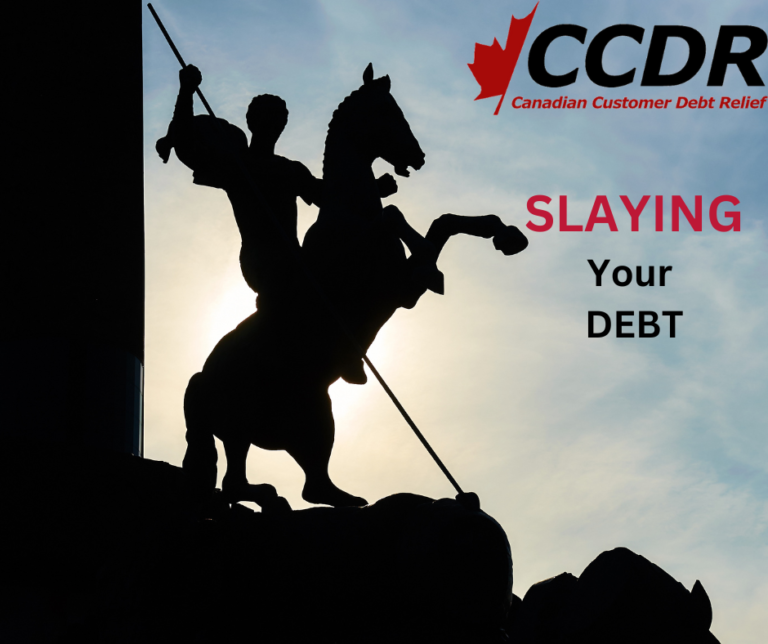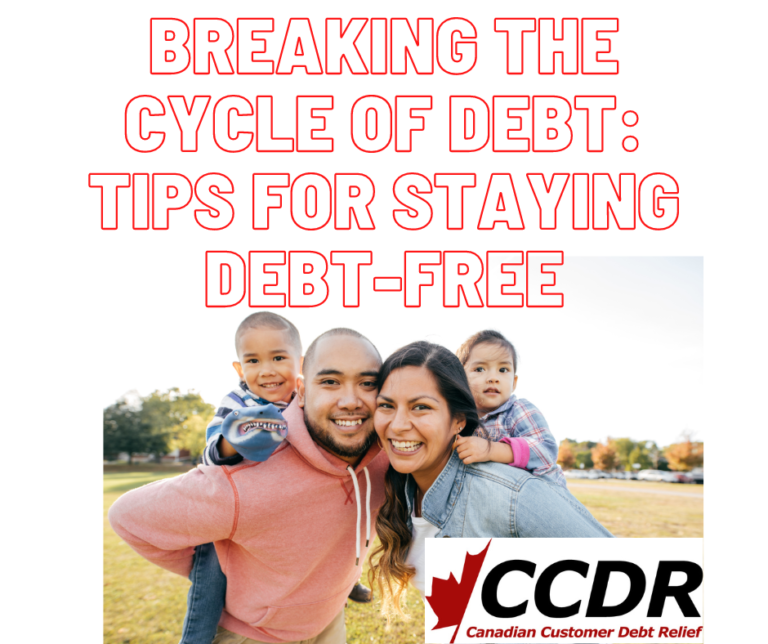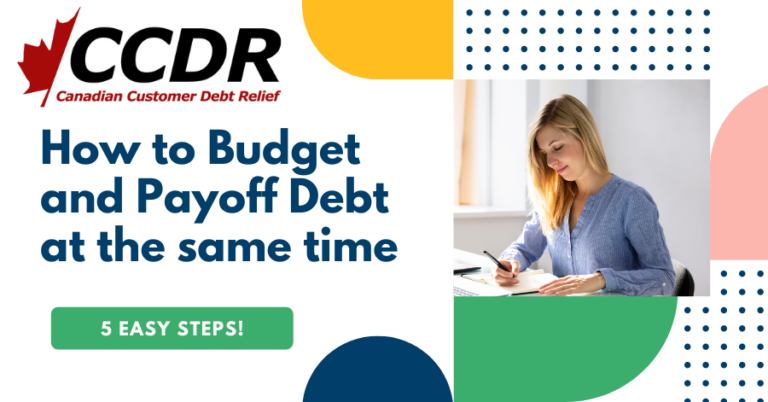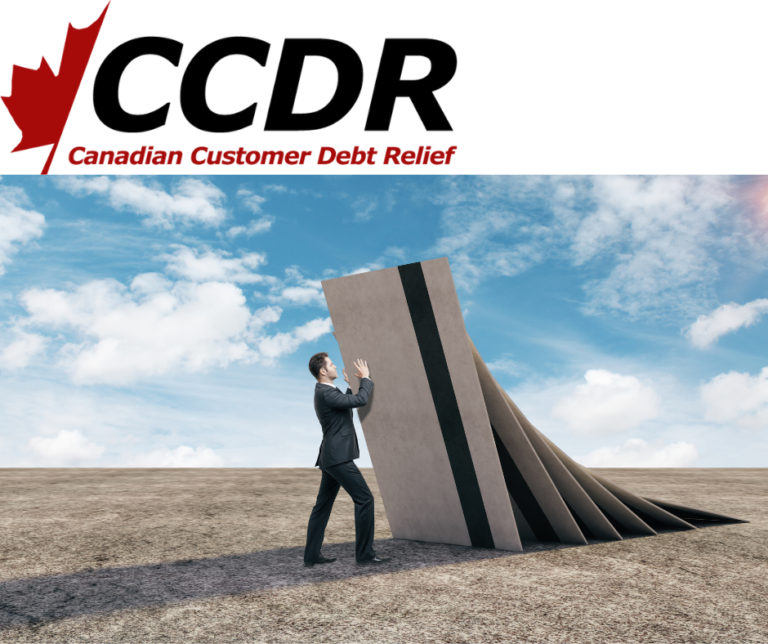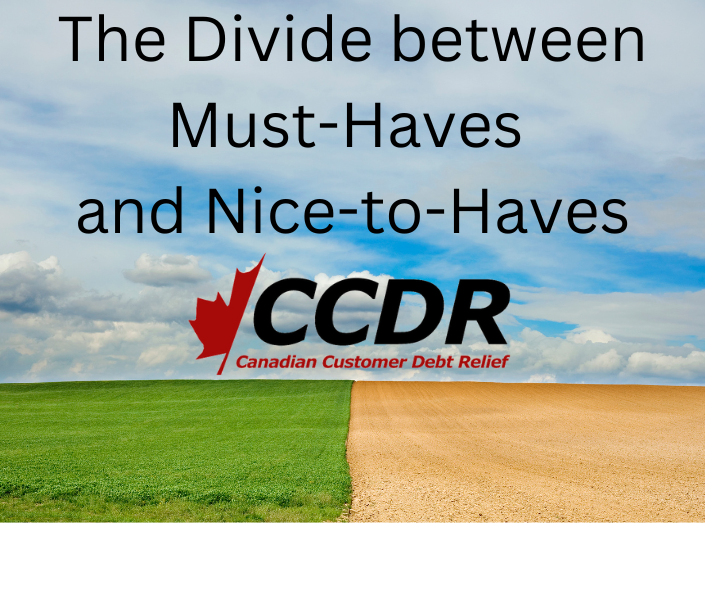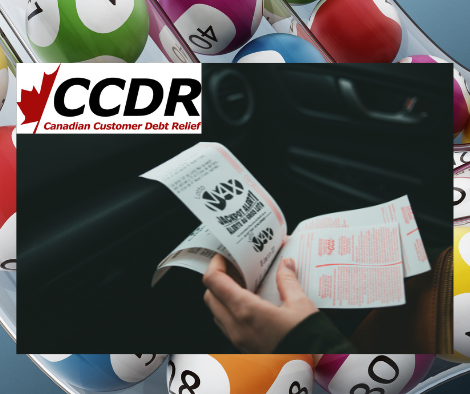Posts Tagged ‘Budgeting’
Everyday Millionaires
You can be “the everyday millionaire” with 5 simple habits to follow!
CCDR #millionaire #habits #growthmindset #financialfreedom
10 Tips for Maintaining a Healthy Budget at Home
Maintaining a healthy budget at home has become more critical today, where everything seems to be getting expensive daily. As a result, we have to be more mindful of our finances and keep our expenses in check. This article will provide ten practical tips for maintaining a healthy budget at home.
Create a budget plan
Creating a budget plan is the first step in maintaining a healthy home budget. This will help you keep track of your expenses and identify areas where you can cut down your costs. Next, list your monthly income and expenses, including your bills, groceries, and other miscellaneous costs.
Cut down on unnecessary expenses
Once you have created your budget plan, it’s time to cut down on unnecessary expenses. This includes dining out, buying clothes you don’t need, and subscription services you rarely use. Instead, focus on spending on essential items and prioritize your expenses accordingly.
Plan your meals in advance
Planning your meals can help you save significant money. For example, list the groceries you need for the week and avoid impulse purchases. Additionally, you can opt for budget-friendly meals and make use of leftovers.
Avoid unnecessary debt
Avoid taking on unnecessary debt and always pay your bills on time. This will help you avoid late fees and penalties, which can add up to a significant amount over time. In addition, if you have existing debt, pay it off as soon as possible to avoid accruing additional interest charges.
Reduce energy consumption
Reducing your energy consumption can help you save significant money on your utility bills. You can do this by turning off lights and appliances when not in use, using energy-efficient light bulbs, and reducing water usage.
Consider refinancing your mortgage
If you have a mortgage, consider refinancing it to a lower interest rate. This can help you save on monthly mortgage payments and free up extra cash for other expenses.
Find ways to earn extra income
Finding ways to earn extra income can also help you maintain a healthy budget at home. For example, you can take on a part-time or freelancing job, sell unwanted items online, or offer your skills and services to others.
Use coupons and discount codes
Using coupons and discount codes can help you save money on your purchases. Look for online deals and coupon codes before purchasing, and take advantage of sales and promotional offers.
Invest in home maintenance
Investing in home maintenance can help you avoid costly repairs and replacements in the future. Regularly cleaning and maintaining your home appliances and systems can also help you save money on your utility bills.
Set financial goals
Finally, setting financial goals can help you stay motivated and focused on maintaining a healthy budget at home. Whether saving for a vacation or paying off debt, having a clear plan can help you prioritize your expenses and make smart financial decisions.
In conclusion, maintaining a healthy budget at home requires discipline, planning, and intelligent financial decisions. By following these tips, you can reduce your expenses, avoid unnecessary debt, and save money for the future.
Slaying Your Debt: A Step-by-Step Guide for Canadians
-
Table of Contents
- Introduction
- How to Create a Budget to Slay Your Debt: A Step-by-Step Guide for Canadians
- Debt Consolidation: What You Need to Know to Reduce Your Debt in Canada
- Credit Counseling: A Guide to Finding the Right Debt Relief Program for Canadians
- The Debt Snowball Method: How to Pay Off Your Debt Quickly and Easily
- The Debt Avalanche Method: A Step-by-Step Guide to Reducing Your Debt in Canada
- Conclusion
“Take Control of Your Finances and Slay Your Debt with Our Step-by-Step Guide!”
Introduction
Are you struggling with debt? Are you looking for a way to get out of debt and stay out of debt? If so, Slaying Your Debt: A Step-by-Step Guide for Canadians is the perfect book for you. This comprehensive guide provides Canadians with the tools and strategies they need to take control of their finances and get out of debt. It covers everything from budgeting and debt repayment strategies to understanding credit and building wealth. With this book, you will learn how to create a plan to pay off your debt and achieve financial freedom.
How to Create a Budget to Slay Your Debt: A Step-by-Step Guide for Canadians
Are you ready to slay your debt and take control of your finances? It’s time to create a budget that will help you reach your financial goals. With a little bit of planning and dedication, you can make a budget that will help you pay off your debt and get back on track. Here’s a step-by-step guide to creating a budget that will help you slay your debt.
Step 1: Calculate Your Income
The first step to creating a budget is to calculate your income. This includes your salary, any bonuses, investments, and other sources of income. Make sure to include all sources of income, even if it’s just a few dollars here and there.
Step 2: Calculate Your Expenses
The next step is to calculate your expenses. This includes your rent or mortgage, utilities, groceries, transportation, and any other expenses you have. Make sure to include all of your expenses, even if they’re small.
Step 3: Track Your Spending
Once you’ve calculated your income and expenses, it’s time to track your spending. This means keeping track of every purchase you make, no matter how small. This will help you identify areas where you can cut back and save money.
Step 4: Set Financial Goals
Now that you’ve tracked your spending, it’s time to set financial goals. This could include paying off your debt, saving for a vacation, or building an emergency fund. Make sure to set realistic goals that you can actually achieve.
Step 5: Create a Budget
Now that you’ve set your financial goals, it’s time to create a budget. Start by allocating a certain amount of money to each of your goals. Make sure to leave some room for fun and entertainment, but don’t forget to save for your future.
Step 6: Stick to Your Budget
The last step is to stick to your budget. This means tracking your spending and making sure you’re staying on track. If you find yourself slipping, don’t be too hard on yourself. Just make sure to get back on track as soon as possible.
Creating a budget can be intimidating, but it doesn’t have to be. With a little bit of planning and dedication, you can create a budget that will help you slay your debt and get back on track. So take the first step today and start creating a budget that will help you reach your financial goals.
Debt Consolidation: What You Need to Know to Reduce Your Debt in Canada
Are you feeling overwhelmed by debt? You’re not alone. Many Canadians are struggling with debt and are looking for ways to reduce it. Debt consolidation is one option that can help you get back on track.
Debt consolidation is a process that combines multiple debts into one loan with a lower interest rate. This can help you save money on interest and make it easier to manage your payments. It can also help you pay off your debt faster.
When considering debt consolidation, it’s important to understand the different types of loans available. There are secured and unsecured loans, and each has its own advantages and disadvantages. Secured loans are backed by collateral, such as a car or home, and typically have lower interest rates. Unsecured loans are not backed by collateral and typically have higher interest rates.
It’s also important to understand the terms of the loan. Make sure you understand the repayment schedule, interest rate, and any fees associated with the loan. You should also make sure you can afford the monthly payments.
Debt consolidation can be a great way to reduce your debt and get back on track. But it’s important to do your research and make sure you understand the terms of the loan before you commit. With the right plan and a little bit of discipline, you can reduce your debt and get back on the path to financial freedom.
Credit Counseling: A Guide to Finding the Right Debt Relief Program for Canadians
Are you feeling overwhelmed by debt? You’re not alone. Many Canadians are struggling to make ends meet and are looking for ways to get out of debt. Credit counseling can be a great way to get the help you need to get back on track.
Credit counseling is a form of debt relief that can help you manage your finances and get out of debt. It’s a process that involves working with a credit counselor to develop a plan to pay off your debt. The counselor will help you understand your financial situation, create a budget, and develop a plan to pay off your debt.
When looking for a credit counseling program, it’s important to find one that is right for you. Look for a program that is accredited by the Canadian Credit Counselling Association (CCCA). This will ensure that the program is reputable and has the experience and expertise to help you.
It’s also important to find a program that is tailored to your needs. Look for a program that offers personalized advice and support. A good program will provide you with the tools and resources you need to make a plan to pay off your debt.
Finally, make sure you understand the fees associated with the program. Some programs may charge a fee for their services, so make sure you understand what you’re paying for.
Credit counseling can be a great way to get the help you need to get out of debt. With the right program, you can get the support and guidance you need to make a plan to pay off your debt and get back on track. Don’t let debt overwhelm you – take control of your finances and get the help you need to get out of debt.
The Debt Snowball Method: How to Pay Off Your Debt Quickly and Easily
Are you feeling overwhelmed by debt? Do you feel like you’ll never be able to pay it off? Don’t worry, you’re not alone. Millions of people are in the same boat. But there is hope! The debt snowball method is a simple and effective way to pay off your debt quickly and easily.
The debt snowball method is based on the idea that you should pay off your smallest debt first. This will give you a sense of accomplishment and motivate you to keep going. Once you’ve paid off your smallest debt, you can move on to the next one. This process will continue until all of your debts are paid off.
The debt snowball method is a great way to stay motivated and keep track of your progress. Every time you pay off a debt, you’ll be one step closer to becoming debt-free. You’ll also be able to see how much money you’re saving by not having to pay interest on your debts.
The debt snowball method is also a great way to save money. By paying off your smallest debt first, you’ll be able to save money on interest payments. This will help you pay off your debt faster and save you money in the long run.
The debt snowball method is a great way to get out of debt quickly and easily. It’s a simple and effective way to stay motivated and keep track of your progress. So don’t give up hope! With the debt snowball method, you can become debt-free in no time.
The Debt Avalanche Method: A Step-by-Step Guide to Reducing Your Debt in Canada
Are you feeling overwhelmed by your debt? You’re not alone. Many Canadians are struggling with debt, and it can be hard to know where to start when it comes to reducing it. That’s why we’re here to help. The debt avalanche method is a great way to reduce your debt and get back on track. Here’s a step-by-step guide to help you get started.
Step 1: Make a List of Your Debts
The first step is to make a list of all your debts. Include the name of the creditor, the amount owed, the interest rate, and the minimum payment. This will help you get a better understanding of your financial situation and make it easier to prioritize your debts.
Step 2: Calculate Your Debt Avalanche
Once you have your list of debts, you can calculate your debt avalanche. This is the amount of money you need to pay each month to pay off your debts in the shortest amount of time. To do this, you’ll need to add up the minimum payments for all your debts and then subtract that amount from your total monthly income. The difference is the amount you can put towards your debt avalanche.
Step 3: Prioritize Your Debts
Now that you know how much you can put towards your debt avalanche, it’s time to prioritize your debts. Start by paying off the debt with the highest interest rate first. This will save you the most money in the long run. Once you’ve paid off that debt, move on to the next one with the highest interest rate and so on.
Step 4: Make Your Payments
Now that you’ve prioritized your debts, it’s time to make your payments. Make sure you make your payments on time and in full each month. This will help you stay on track and avoid late fees and other penalties.
Step 5: Celebrate Your Success
Once you’ve paid off your debts, it’s time to celebrate! Take a moment to appreciate all the hard work you’ve done and the progress you’ve made. You’ve taken a big step towards financial freedom and that deserves to be celebrated.
The debt avalanche method is a great way to reduce your debt and get back on track. With a little bit of planning and dedication, you can make a plan to pay off your debts and start living a debt-free life. So don’t give up – you can do this!
Conclusion
Slaying Your Debt: A Step-by-Step Guide for Canadians is an invaluable resource for anyone looking to get out of debt and take control of their finances. It provides a comprehensive overview of the different debt repayment strategies available, as well as practical advice on how to create a budget, manage expenses, and build an emergency fund. With its clear and concise language, this guide is an essential tool for anyone looking to take charge of their financial future.
Breaking the Cycle of Debt: Tips for Staying Debt-Free
Debt is a vicious cycle that can be difficult to break out of once it starts. It can be overwhelming to try and figure out how to get back on track and stay debt-free, but it is possible. In this article, we will provide you with tips and strategies for breaking the cycle of debt and staying debt-free.
Assess Your Current Debt Situation
The first step in breaking the cycle of debt is to assess your current situation. Take a look at how much debt you have and where it is coming from. This will help you determine what steps you need to take to get back on track. Make a list of all of your debts, including credit card debt, student loans, car loans, and any other debts you may have.
Create a Budget
Once you have assessed your debt situation, it is time to create a budget. A budget will help you keep track of your expenses and ensure that you have enough money to pay off your debts. Start by listing all of your income, including your salary, any side hustles, and any other sources of income. Then, list all of your expenses, including rent or mortgage payments, utilities, transportation, food, and any other expenses you may have. Be sure to include any debt payments you need to make.
Prioritize Your Debts
Next, prioritize your debts. Start by paying off the debt with the highest interest rate first. This will help you save money in the long run and get out of debt faster. You can also consider consolidating your debts into one payment to make it easier to manage.
Cut Expenses
In order to pay off your debts, you may need to cut expenses. Start by looking for ways to reduce your monthly expenses, such as cutting back on eating out, buying generic brands, and reducing your entertainment budget. You can also consider getting a side hustle to bring in extra income.
Increase Your Income
Increasing your income is another way to help you get out of debt and stay debt-free. Consider getting a second job, freelancing, or starting a side business to bring in extra income. You can also ask for a raise or negotiate a higher salary if you are currently employed.
Stick to Your Plan
Breaking the cycle of debt takes time and discipline. It is important to stick to your plan and stay focused on your goal of becoming debt-free. Surround yourself with positive influences and people who support your goal. If you find yourself struggling, don’t be afraid to seek help from a financial advisor or debt counselor.
Conclusion
Breaking the cycle of debt can be a challenging process, but it is possible. By assessing your debt situation, creating a budget, prioritizing your debts, cutting expenses, increasing your income, and sticking to your plan, you can become debt-free and stay that way. Take control of your finances and start taking steps towards financial freedom today.
Budget and Pay off Debt Simultaneously
5 Steps to Budgeting and Paying off Debt
Debt can be a heavy burden, but with proper planning and by following these five steps, managing finances and reducing debt can become a reality. A comprehensive budgeting strategy is key to prioritizing expenses, saving money, and quickly paying off debt.
Step 1: Evaluate Finances
Initially, it is important to gain a clear understanding of your current financial situation. This involves calculating your monthly income and expenses, including any existing debt. By identifying areas to reduce expenses, you can allocate more funds towards debt repayment.
Step 2: Draft a Budget
After evaluating your finances, the next step is to create a budget that suits your needs. This budget should include all necessary expenses such as housing, utilities, food, transportation, and entertainment. Above all, it is crucial to make debt repayment a top priority in the budget.
Step 3: Focus on Debt Repayment
To make the most of your budget and reduce debt effectively, it’s essential to target the debt with the highest interest rate first. By doing so, you’ll save money on interest and speed up the debt elimination process. Once one debt is paid off, you can redirect the payments towards the next debt on your list.
Step 4: Monitor Progress
As you make progress, it’s important to frequently review your budget and make any necessary adjustments. Seeing tangible progress towards your financial goals can be a great source of motivation and help you stay on track.
Step 5: Celebrate Success
Finally, it’s crucial to acknowledge and reward your hard work. Whether it’s paying off a debt or reaching a savings goal, take time to celebrate your success and recognize your efforts.
Balancing debt and budgeting can be a challenging task, but by following these five steps, you can take control of your finances, reduce debt, and reach your financial goals.
How to Avoid Debt Relapse after Paying it Off
Congratulations on paying off your debt! That’s a huge accomplishment and a step in the right direction toward financial freedom. However, it’s important to remember that the journey doesn’t end there. To truly achieve financial peace, you must avoid falling back into debt. In this post, I’ll share some practical tips to help you stay debt-free for good.
1. Budgeting
Budgeting is the cornerstone of financial success. Without a budget, it’s difficult to track your spending and make sure you’re living within your means. When you’ve just paid off debt, it’s tempting to splurge and treat yourself, but this can quickly lead to debt relapse. To avoid this, create a budget that works for you. Make sure it’s realistic and takes into account your income, expenses, and savings goals.
2. Financial Discipline
Once you have a budget in place, it’s time to develop financial discipline. This means avoiding lifestyle inflation, automating savings, and practicing mindful spending. It’s important to live below your means and avoid taking on new debt, so make sure your budget includes room for an emergency fund.
3. Emergency Savings
An emergency fund is a key component of financial stability. It provides a cushion for unexpected expenses and helps you avoid going into debt in case of a financial emergency. To build an emergency fund, start small and gradually increase your contributions until you have three to six months’ worth of living expenses saved.
4. Avoiding New Debt
Avoiding new debt is critical to staying debt-free. This means avoiding credit cards, loans, and other forms of debt unless it’s absolutely necessary. To avoid new debt, live within your means, save up for big purchases, and focus on paying off any remaining debts.
5. Financial Education
Staying informed about personal finance is important for avoiding debt relapse. Read books, attend workshops, and seek out resources that will help you maintain your financial discipline. The more you know about personal finance, the more equipped you’ll be to make smart financial decisions.
6. Creating a Debt-Free Plan
Creating a debt-free plan will help you stay motivated and focused on your financial goals. This could be as simple as creating a list of short- and long-term financial goals or creating a detailed budget and tracking your progress. Whatever approach you choose, make sure it’s something that works for you and helps you stay on track.
7. Monitoring Spending Habits
Finally, monitoring your spending habits is key to avoiding debt relapse. Keep track of your spending, review your budget regularly, and make adjustments as needed. This will help you stay on top of your finances and avoid falling back into debt.
Avoiding debt relapse after paying it off requires a combination of budgeting, financial discipline, emergency savings, avoiding new debt, financial education, creating a debt-free plan, and monitoring spending habits. By following these tips, you can stay on track and achieve financial peace for good. Remember, financial success is a journey, not a destination, so stay focused and keep moving forward.
The Divide between Must-Haves and Nice-to-Haves: How Canadian Customer Debt Relief Can Help
In today’s world of endless options and endless possibilities, it can be challenging to determine what is truly essential and what is simply a want. The line between needs and wants is often blurred, making it difficult to prioritize and make sound financial decisions. This is where Canadian Customer Debt Relief can help, by providing guidance and support in distinguishing between the two.
A need is something that is essential for survival or well-being. These are the things we cannot live without, such as food, shelter, clothing, and medical care. These necessities are required for our physical and emotional well-being, and without them, we cannot lead a healthy and fulfilling life.
Wants, on the other hand, are things we desire but do not need to survive. These are items or experiences that bring us pleasure, such as a new car, a vacation, or a designer handbag. Wants are not essential to our survival, but they can improve our quality of life.
Canadian Customer Debt Relief can assist in identifying the difference between needs and wants by providing tools and resources to help prioritize spending and make more informed financial decisions. By understanding what is essential and allocating resources accordingly, individuals can avoid overspending on items that bring temporary pleasure but do not add long-term value to their lives.
To determine whether an item is a need or a want, Canadian Customer Debt Relief suggests asking yourself the following questions:
- Will my life be affected if I don’t have this item?
- Is this item necessary for my physical or emotional well-being?
- Can I live without this item and still be happy?
By answering these questions, individuals can gain a better understanding of what is truly important and what is simply a desire. Canadian Customer Debt Relief can provide additional support and resources to help make informed financial decisions, including debt management plans, budgeting tools, and credit counseling services.
The divide between needs and wants is crucial in making informed financial decisions. Understanding the difference between what is essential and what is simply a desire allows individuals to prioritize their spending and allocate their resources accordingly. With the support of Canadian Customer Debt Relief, individuals can lead a more balanced and fulfilling life, free from the burden of debt and financial stress.
The lottery is a waste of money compared to having a budget
Lotteries have been a popular form of gambling for many years, with people spending billions of dollars each year in the hope of winning a life-changing jackpot. However, despite its popularity, the lottery is widely considered to be a waste of money. In this article, we will discuss why the lottery is a waste of money and why having a budget is a win.
- Low Odds of Winning: The odds of winning a lottery jackpot are extremely low, often as high as hundreds of millions to one. This means that for every dollar spent on a lottery ticket, the chance of winning a significant payout is very low. Many people are not aware of the low odds and end up wasting money on tickets that will never pay off.
- False Sense of Hope: The lottery preys on people’s hope of getting rich quickly, but the reality is that the odds of winning are so low that it’s highly unlikely that a person will ever win a significant amount. The false hope created by the lottery can lead people to waste money that could have been better spent on more productive things.
- Regressive Tax: Lotteries are often marketed as a way to fund education or other public services, but in reality, they are a regressive tax that disproportionately affects low-income individuals. Research has shown that the poorest third of households spend a disproportionate amount of their income on the lottery compared to the richest third.
On the other hand, having a budget can be a win in many ways. A budget helps people to prioritize their spending, save for their goals, and avoid overspending. When people have a budget, they are more aware of their spending patterns and can make informed decisions about how to allocate their resources.
- Increased Awareness: A budget helps people to be more aware of their spending habits, which can be helpful in reducing wasteful spending. By tracking their expenses and understanding where their money is going, people can identify areas where they can cut back and save more.
- Better Planning: A budget enables people to plan ahead for their future expenses, such as a down payment on a house or a child’s college education. By knowing their financial situation and having a plan, people can make better decisions about their money and avoid impulsive spending.
- Improved Savings: Having a budget can lead to improved savings. When people know exactly how much money they have and where it’s going, they are better equipped to save for their future.
The lottery is a clear waste of money because of its low odds of winning and the false hope it creates. On the other hand, having a budget can be a win because it helps people to be more aware of their spending, better plan for their future, and improve their savings. Instead of wasting money on the lottery, it’s better to invest in a budget and take control of your financial future.
10 TIPS to Save Money in the Cold Winter
Winter can be a challenging time for your wallet, especially with rising heating costs. But there are ways to keep your home warm and your expenses low. Here are ten tips to help you save money during the cold winter.
- Use a Programmable Thermostat: One of the easiest ways to reduce heating costs is by using a programmable thermostat. Set it to a lower temperature when you’re not home, so you’re not wasting energy heating an empty house.
- Seal Air Leaks: Check your windows and doors for air leaks and seal them with weather stripping or caulk. This will prevent warm air from escaping and cold air from entering, saving you money on your heating bill.
- Insulate Your Home: Insulation is one of the most effective ways to retain heat. Check the insulation in your attic, walls, and floors to ensure it’s in good condition. If not, consider adding more insulation to save on heating costs.
- Use Draft Stoppers: Draft stoppers are an easy and inexpensive way to prevent cold air from entering your home through gaps under doors. Simply place them at the bottom of your doors to save energy and money.
- Wear Warm Clothing Indoors: Instead of cranking up the heat, wear warm clothing and use cozy blankets to stay comfortable indoors. You’ll save money on your heating bill and be extra cozy at the same time.
- Take Advantage of Natural Light: Take advantage of natural light during the day to warm your home. Open curtains and blinds to let the sunshine in and save on energy costs.
- Use a Space Heater: Instead of heating your entire home, use a space heater in your room. This way, you’re only heating the space you’re using and saving money on your heating bill.
- Limit Hot Showers and Baths: Hot showers and baths can be a big drain on your water heating bill. Limit the time you spend in the shower and consider taking shorter, cooler showers to save on energy costs.
- Cook with a Slow Cooker or Pressure Cooker: Cooking with a slow cooker or pressure cooker is a great way to save energy in the kitchen. These appliances use less energy than traditional ovens and stovetops so you can save money on your energy bill.
- Consider a More Efficient Heating System: If you have an older heating system, consider upgrading to a more efficient one. Newer methods use less energy and can save you money on your heating bill in the long run.
With these 10 tips, you can save money and stay warm this winter. Whether you’re looking to reduce heating costs, save energy in the kitchen, or wear more warm clothing indoors, there are many simple ways to make a big difference in your expenses. So why not start saving today?
Why Skipping Friday Night Outings Can Help You Save Money
Friday nights are often the perfect time to let loose and have fun. Whether going out to dinner, catching a movie, or hitting up a bar or club, there’s no shortage of ways to spend your Friday evening. But while these activities can be a lot of fun, they can also put a severe dent in your budget. If you’re looking to save money, one smart move you can make is to start skipping Friday night outings.
- The first reason why skipping Friday night outings can help you save money is that these activities tend to be expensive. For example, going out to dinner at a nice restaurant can easily cost $50 or more per person, and that’s before you even factor in the cost of drinks or a movie ticket. And if you’re planning to hit up a bar or club, you’re likely to spend even more. With prices like these, it’s easy to see how a few Friday night outings can quickly add up and take a big bite out of your budget.
- Another reason why skipping Friday night outings can help you save money is that these activities can often lead to impulse spending. When you’re out and about, it’s easy to get caught up in the moment and buy things you don’t need. Whether an extra drink or a new shirt, these impulse purchases can add up quickly and leave you with less money in your bank account than you planned. By staying in Friday nights, you can avoid these impulse purchases and keep more money.
- Finally, skipping Friday night outings can help you save money by giving you more time to focus on budgeting and money management. When you’re out and about, it can be difficult to find the time to sit down and review your budget or plan to save money. But when you’re staying in on Friday nights, you have more time to focus on these critical tasks and ensure that your money is used in the best way possible. Skipping Friday night outings may not be the most exciting thing in the world, but it’s an easy and effective way to save money. By staying in on Friday nights, you can avoid expensive activities and impulse purchases and use the extra time to focus on budgeting and money management. So the next time you’re tempted to hit the town on a Friday night, remember that staying in can be just as fun and much more financially beneficial.
